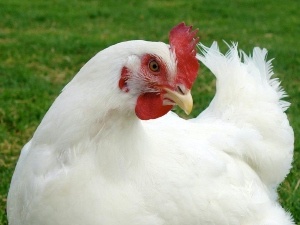
Chicken legs are quite different from human legs, not only are chicken legs much smaller than human legs but chickens have an added break in their legs, in addition to the ankle joint and the knee joint, chickens have a joint called the “hock” joint.
The hock plays an important role in the bird’s ability to walk, but chickens shouldn’t be walking on this joint. This article looks into why your bird may be doing this.
Table of Contents
Chicken walking on hocks
Chickens have a bit of an odd way of walking, they bop their head forward when they walk and they walk on their toes. This is normal but the bird walking on its hocks is not.
If your bird is starting to walk oddly, if the bird is suddenly walking on its hocks then this may be what’s wrong with the bird:
Slipped tendons:
Animals, chickens included, have tendons that attach to muscles and bones just as humans do.
Chickens can suffer from slipped tendons just as humans can. If your bird has a slipped tendon then the bird will stand and walk on its hocks instead of on its toes as normal.
Slipped tendons in chickens is also referred to as “perosis”. This condition causes the birds tendon to slip out of position.
Chickens develop perosis if they have a diet that is deficient in biotin, manganese, folic acid, niacin or choline.
A tendon, when in the correct position, will run down the groove at the back of the bird’s hock. A slipped tendon describes the condition where the tendon slips out of place and moves to the side of the bird’s leg.
This tendon misalignment is what causes the bird to walk on its hocks. The bird has to walk on its hocks because it can’t straighten its leg by itself.
What to do:
You’d need to get the bird’s tendon back in place. Secure the bird and then roll the bird’s affected joint between your thumb and finger. The tendon will snap back into position and you’ll feel this as you roll.
Make sure to feed the bird a diet that contains all the nutrients that the growing bird needs to grow well and healthily.
You may need to give the bird supplementation to ensure that it gets all the nutrients that it needs. With that being said, do not give the bird supplements in excess as this can cause other issues.
Isolate the sick bird and keep it comfortable. Make sure that this bird has its own food and water sources while in isolation.
Bandage or splint the bird’s leg to keep it in place for a little while.
Curly toe paralysis:
If your bird is walking on its hocks and has inward curling toes then your bird may have curly toe paralysis. Birds with this condition stand and walk on their hocks.
Chickens develop curly toe paralysis if they consume a diet lacking in riboflavin (Vitamin B2).
Other symptoms of curly toe paralysis in birds include slow growth and diarrhea.
What to do:
A bird suffering from curly toe paralysis needs to be isolated until it recovers. Give the bird access to its own food and water while in isolation.
The bird may find it difficult to access the food and water offered because of its leg condition. If this is the case then you’d need to be on standby to carry it to its food and water source.
You can syringe food and water into the bird’s mouth to help it eat. The bird will die of starvation or thirst if it can’t access food and water.
Make sure that the feed that you serve the bird is fresh, feed stored for longer than 2 months is not recommended for birds. Keep your bird’s feed fresh and protected by sealing it in a container and keeping it away from sunlight.
Give the bird vitamin supplements while it is recovering and help the bird with physical therapy to help it recover.
Add supplements to the bird’s feed or water as a treatment for this condition, supplement riboflavin in the bird’s diet. The bird should be given 10-16 mg/kg of riboflavin on a daily basis to help with recovery.
In addition to the riboflavin, feed the bird other essential vitamins like calcium, phosphorus, vitamin b2, vitamin d3, vitamin e, vitamin k, and manganese, to maintain its health.
Protect the bird’s hocks from becoming bruised, and protect the skin on the hocks from becoming worn, by padding the hocks with foam taped to the bird’s hocks.
You can use a cushion on the bottom of the bird’s enclosure as an added precaution.
What is a slipped hock?
A slipped hock is when the joint between the ankle joint, and the drumstick in a chicken becomes dislocated from its normal position,
What is hock burn?
“Hock burn” describes the phenomenon where the hock joints of a chicken develop lesions. This happens when the hocks become exposed to ammonia waste. It is considered a form of contact dermatitis.
If you enjoyed this article then you may also be interested in other chicken related articles. Here are some articles that you may be interested in: Chick Walking On Hocks, Chicken Has A Broken Knee Joint, Chicken Has A Broken Ankle, Chicken Limping And Has Diarrhea, Rooster Has A Broken Leg

